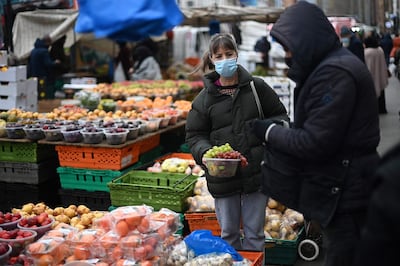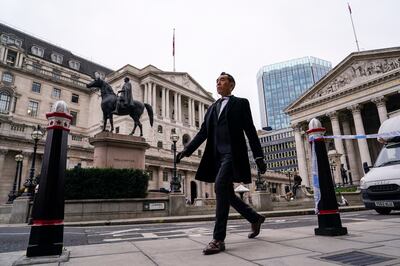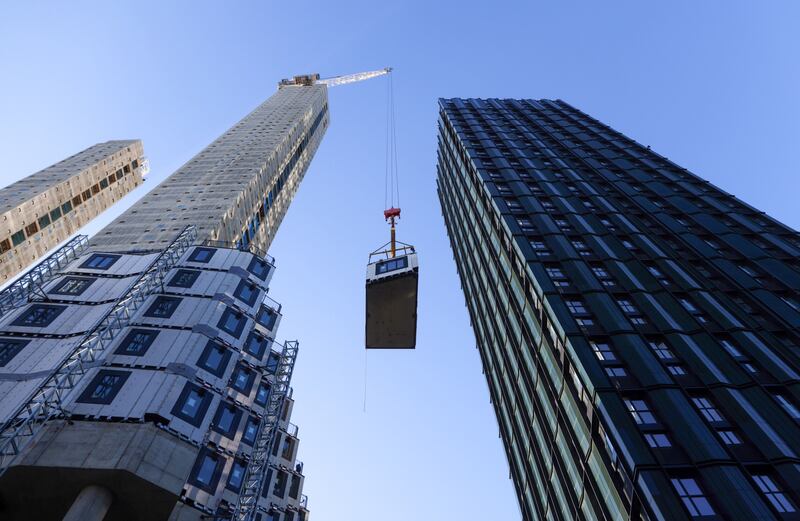Britain’s inflation rate is expected to hit a 30-year high on Wednesday, when the government releases its December data, as households across the country face a cost-of-living crisis.
Economists expect inflation to hit 5.2 per cent in the final month of 2021 – the joint highest rate since the early 1990s and a 0.1 per cent increase on the 5.1 per cent recorded in November, which itself was a decade high.
While most pundits see Consumer Price Inflation surging to a peak of 6 per cent by April, Paul Dales, chief UK economist at Capital Economics, expects the figure to edge closer to the 7 per cent mark with a high of 6.9 per cent and ramifications for economic growth and interest rates.
In his mind, the higher than expected inflation surge will lead to slower gross domestic growth and in turn further rate rises than other analysts are anticipating – hitting 1.25 per cent by the end of the year – a significant uplift on the current level of 0.25 per cent.
“The risks are that the labour market remains stronger for longer, CPI inflation stays above the 2 per cent target well into next year and the Bank of England raises interest rates further in 2023,” Mr Dales said.
What will cause UK inflation to soar in April?
While higher energy prices pushed up inflation in the last few months of the year – a reflection of surging global energy costs – in turn causing household bills and transport costs to escalate, the picture in November was slightly different.
November’s inflation rate of 5.1 per cent saw increases in food inflation to 4 per cent from 2.5 per cent and hotels/restaurants inflation to 6.2 per cent from 5.2 per cent. Ruth Gregory, senior UK economist at Capital Economics, said they were offset by a fall in fuel and clothing and footwear inflation.
This left overall CPI inflation at 5.1 per cent, while core inflation, which excludes food, energy, alcohol and tobacco, may have nudged down to 3.9 per cent from 4 per cent.
While Ms Gregory expects inflation “to tread water for a couple of months”, the real trigger point will be higher energy prices from April 1, when Ofgem, the energy regulator, will increase its default energy tariff price cap.

What does this mean for households?
Households are set to be £1,200 a year worse off as a result, with an uplift of about £500 to energy bills that have already risen significantly amid soaring wholesale gas prices in recent months.
“We think a rise in the region of 50 per cent is on the cards. That would add 2.1 percentage points to overall inflation and push it up to 6.9 per cent,” Ms Gregory said.
Failing energy firms could cause a further £100 to be added to energy bills, while a 1.25 per cent rise in National Insurance contributions will cost the average household £600 a year.
In the short-term, household budgets will be increasingly squeezed, as higher utility bills, and taxes hit home, with consumer spending set to dip, at least in the first quarter.
Beyond the first three months of the year, however, Mr Dales expects households to save a smaller share of their incomes as they put more towards everyday living costs.
How is the labour market faring?
While some individuals may look for a higher-paying role to offset their higher living costs, Tuesday’s robust employment figures, which showed unemployment down to 4.1 per cent in the three months to November, highlighted some concerning trends.
Job vacancies may be at an all-time high of 1.247, allowing jobseekers the luxury of being able to shop around for the right role, with pay growth, in nominal terms, well above the 2 to 3 per cent range seen before the pandemic.
But fast-rising inflation is eroding the benefit of higher pay for workers, with pay excluding bonuses flat in inflation-adjusted terms in the three months to November, its weakest performance since July last year.
Ramsey Baghdadi, consumer analyst at analytics company GlobalData, said if wages continue to fall behind the rising cost of living, there will be serious consequences for the foodservice industry.
UK customers are sensitive to changes in price, he said, with a recent survey from GlobalData finding that nearly two in five UK consumers are concerned about their personal finances.
Susannah Streeter, senior investment and markets analyst at Hargreaves Lansdown, said the financial and labour markets have batted away Omicron “like an annoying fly”, but worries are increasing that inflationary pressures combined with an income squeeze “could come with a painful sting”.
“The effect of the great resignation as workers search for higher pay is filtering through to wage growth, but the rises aren’t keeping pace with inflation. It’s a problem already buzzing in the ears of BoE policymakers, as they decide when and how quickly to raise rates to try and keep a lid on price rises,” Ms Streeter said.

Where will interest rates go from here?
James Lynch, fixed income investment manager at Aegon Asset Management, expects the strong labour market to be a factor in the BoE’s next interest rate decision on February 3.
“The labour market is key for the Bank of England’s medium-term outlook on inflation. If the signs are there for wage rises in the future, then inflation is going to be longer lasting than what is currently being driven by spiking energy prices,” he said.
With inflation still to rise further over the next three months and Covid-19 restrictions being eased, Mr Lynch said the tight labour market would encourage the central bank to raise interest rates to 0.5 per cent next month.
Concern about possible labour shortages and pay pressures over the medium term was certainly a major reason for the BoE’s December rate rise, the first since the start of the pandemic.
Financial markets now see an 85 per cent chance that the central bank will raise rates again on February 3, with Mr Dales expecting an increase to 1.25 per cent by December as the bank’s balance sheet shrinks slowly from February and more rapidly from August.
“The rise in inflation will prevent public borrowing from falling as fast in 2022/23 as we previously thought,” he said.
With the BoE’s tougher stance towards inflation, Mr Dales said, in the long term, “interest rates will be higher sooner and inflation will be lower”.






